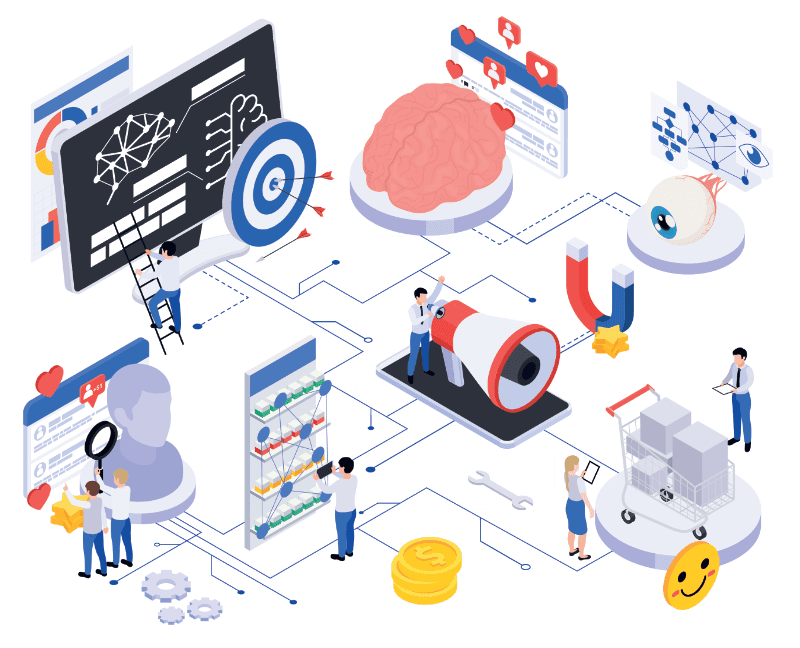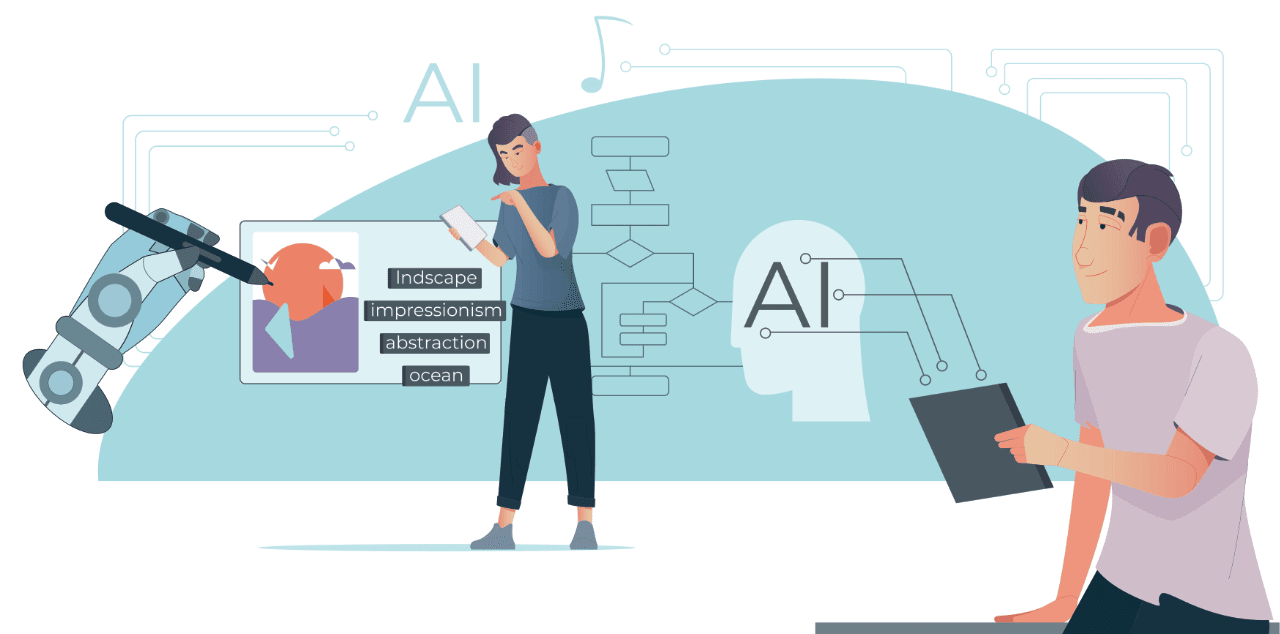In today's digital landscape, content is king, and the demand for fresh, engaging content is insatiable. Marketing operations teams constantly strive to create compelling content for their social media channels, blogs, and other platforms.
Enter Artificial Intelligence (AI), a game-changer that can revolutionize how marketing operations develop social content. In this blog post, we'll explore how marketing operations can harness the power of AI to rapidly generate organic social content from long-form content, such as blogs and white papers, and build a highly efficient social content mill.
What is a Social Content Mill?
A social content mill is a system that transforms lengthy pieces of content into shorter, engaging articles suitable for social media platforms. It's a critical component of content marketing strategies, as it allows brands to maintain a consistent online presence, engage with their audience, and drive traffic to their website.
Churning out a steady stream of compelling, concise content ensures that your brand maintains a regular and engaging online presence. Whether it's a daily tweet, a weekly Facebook update, or a Google My Business post, this consistent output keeps your audience engaged and eager to connect with your brand. While the content you share on social media platforms is vital, the ultimate goal is to channel this engagement towards your website.
Choosing an AI Assistance for Derivative Content
Evaluating available options is crucial when choosing an AI tool for generating derivative content. After testing dozens of tools on the market, we found that chat-based AI tools like ChatGPT provide the best outputs for content. They offer more flexibility to customize the output precisely to your liking.
You can even fine-tune the AI language model to follow your specific brand and style guidelines and continually iterate final outputs until they fit your requirements. Once you've nailed the fine-tuning, the AI uses its machine-learning capabilities to provide future creations based on your preferences. Large language models with fine-tuning capabilities give you the most control over text outputs. Unlike other AI writing tools, you can influence the style, language, tone, and contact the AI software creates.
However, consider tools like Jasper AI and Copy.ai if you prefer a more templated approach. They have hundreds of templates and guided prompt processes for all types of copy, including blogs, ad copy, scripts, email newsletters, product descriptions, social media posts, and more. Some platforms have a limitation on the number of characters in both input and output.
While these limitations may not impact the ability to generate content for social media platforms, which often have stricter character limitations, it's something to consider for how you build the processes to get the text into the chat system, ensuring you've got everything you need but not too much on the input characters.
Another essential consideration is which version of the platform you are using. For instance, ChatGPT currently provides a selection option for earlier models or the current GPT-4 model. While newer models tend to be the most robust in their capabilities, there are certain mixed-use cases, such as using the GPT-3.5 Instruct model when responses need to be more direct or guided rather than open-ended. By understanding the best model for each use case, you can build process automation with the appropriate API connections to accomplish nearly any end-to-end tasks for a social media content mill.
Building the Social Content Mill
Marketing operations teams should focus on automation, collaboration, and workflow optimization to build an efficient social content mill. Here's a step-by-step process:
Define Objectives and Goals: Clearly articulate the goals of your social content mill. Some objectives include increasing brand visibility, driving website traffic, boosting engagement, or generating leads.
Rebuilding and Automating Derivative Content Creation: Transform long-form content into social media-friendly pieces using AI. Automate this process to save time and resources.
Training Phase: Experiment with different inputs and prompts to fine-tune AI-generated content. Continuously monitor results to ensure quality and relevance.
Access Control: Implement access control measures to prevent misuse of AI-generated content. Consider using APIs to manage content distribution and approvals efficiently.
Re-evaluating Resource Allocation
By adopting AI-driven content creation, marketing operations can free up valuable time and resources. We can now streamline tasks that once demanded significant time investments, allowing teams to delve into initiatives that directly impact brand identity and customer relationships. The extra time and resources created by AI-driven content generation invite a strategic reallocation that can yield substantial benefits. Consider the following areas where reallocating resources can make a significant impact:
Platform Support: Dedicate resources to optimizing your brand's presence on various platforms. Tailor content for each platform's unique audience and engagement style to maximize your brand's reach and impact.
Brand Building: Invest in initiatives that solidify your brand's identity and reputation. Craft compelling narratives, run impactful campaigns, and engage in storytelling that resonates with your audience.
Customer Service: Exceptional customer service is a hallmark of successful brands. Allocate resources to bolster customer service channels, including chatbots, support teams, and self-help resources, to ensure seamless customer interactions.
Social Listening: Utilize advanced social listening tools and strategies to gain insights into audience sentiments and preferences. Adjust your content strategy based on the real-time feedback and trends observed through social listening.
Data-Driven Insights for Continuous Improvement
Like every new technology added to your tech stack, you must continually take a data-driven approach to analyze its effectiveness. But it also opens the doors to test and experiment with different outputs. In traditional content teams, developing unique ad copies, content angles, or other creative ideas would take a lot of time. With AI, you can quickly explore and move through the ideation phases of production.
For example, say you wanted to find the best ad copies for your marketing campaign. You can have your AI software generate dozens of options. Then, you test them over a few days or weeks to determine the best ad copy that attracts the right audience.
You can even quickly generate new content formats. For example, you can create ebooks, whitepapers, and other lead magnets that typically would take dozens of hours to complete. The agility afforded by AI allows you to iterate and refine your experiments quickly, ultimately leading to more impactful content strategies. Just remember, according to US copyright guidance and the outcome of recent legal cases, AI-generated content will not be awarded copyrights without significant human contribution and alterations.
The degree of those alterations required and how you would provide proof of your contributions has yet to be delineated and is likely a gray area that will exist for quite some time. Ultimately, you must create the most unique and brand-specific content yourself. The last thing any marketer wants to do is have AI generate the next Nike "Just Do It"-like creative campaign or brand tagline, only to have a competitor with a larger budget legally rip it off a day later because you can't trademark it or claim copyright on related marketing materials.
While experimentation is essential for content mill success, coupling it with rigorous reporting and analysis is necessary for continuous improvement. Monitor the performance of your content closely and evaluate the results against predefined key performance indicators (KPIs). AI-generated content streamlines this process and provides more statistically significant results by generating as many slight alterations as you need for any A/B testing experiments.
Don't Give Up Control to AI
There's a common misconception that AI can entirely replace human control in content creation. However, using AI as a productivity tool to increase your team's success, not a replacement for employees, is best. Human oversight is essential for content editing, approvals, and ensuring that AI-generated content aligns with brand guidelines and objectives.
These tools automate repetitive tasks, enhance productivity, and provide data-driven insights. However, they lack the nuances of human creativity, emotional intelligence, and ethical judgment. By working in tandem with AI, employees can harness its capabilities to streamline workflows, generate content more efficiently, and focus on higher-level tasks that require human ingenuity. It's not a question of AI versus humans but rather AI alongside humans.
Human oversight is a critical aspect of any AI-driven content creation process. While AI can generate content rapidly and consistently, humans bring the final polish, context, brand expertise, and differentiators. Content editing and approvals ensure that the content aligns with the brand's values, remains on-message, and adheres to ethical standards.
Human editors and content creators play an indispensable role in refining AI-generated content. They infuse it with the personal touch, creativity, and cultural awareness only humans can provide. AI does not replace content creators; creators evolve into curators and editors who guide and shape the content AI produces, spending more time creating a unique vision and perspective than rote content building.
Expanding AI's Use in Marketing Campaigns
Text-based AI platforms are readily available and effective, it's still essential to assess the readiness of AI for other marketing mediums, such as images and videos. AI-generated images have made significant strides, but marketers must be aware of trade-offs in quality and authenticity. Therefore, at this current time, it may not be feasible or time-effective to use image-based AI tools to generate photos for social media content.
While AI-generated images have made significant progress, they may only sometimes match the quality and realism of human-created visuals. In social media, where authenticity and visual appeal are crucial, subpar or unrealistic images can negatively impact engagement and brand perception. Many brands have established a consistent visual identity on social media. AI-generated images may only sometimes align with these established brand guidelines, leading to inconsistencies in the content. Currently, there is less control for fine-tuning image content than text-based AI-generated materials.
Regarding video marketing, challenges include maintaining object permanency in moving images. Unlike static images or text-based content, videos are dynamic and ever-changing. They consist of a sequence of continually evolving frames, presenting unique challenges for AI systems. Object permanence in videos involves tracking and recognizing objects or elements as they move and transform within the frame. Maintaining object permanency requires AI algorithms to accurately track objects across frames, even when they temporarily disappear from view due to motion or occlusion.
AI systems must track and correctly identify and categorize objects, distinguishing between different objects, recognizing their attributes, and understanding their role within the video's context. Unfortunately, the AI systems aren't advanced enough yet to meet these demands for video, especially for regular business use, unless your brand is okay with the level of quality and use cases these systems can currently generate.
Leverage AI in Your Marketing Operations
Presently, we highly recommend text-based AI generation for a wide range of uses, image-based for a narrow range of uses, and with video, 3D, or even programming, we consider their use cases on the horizon. While their outputs are impressive, you're unlikely to want their unaltered outputs as a final product in any of those use cases, especially for programming where security defects may materially harm your company and customers if hackers can exploit them. Even in the case of text and image generation, we always recommend these tools as enhancements to human workflows with a human creator, editor, and approver in the loop, even when automated to a high degree.
Remember, AI is a valuable tool to augment human capabilities, not replace them. Embrace AI, but always maintain control and oversight to ensure your content aligns with your brand's vision and resonates with your audience. Explore AI solutions for your marketing strategies and watch your content flourish, generating more leads and building thought leadership in the process.
Incorporating AI into marketing operations can be a game-changer, allowing businesses to create a highly efficient social content mill. Marketing teams can stay ahead of the curve in the ever-competitive digital landscape by selecting the right AI tools, optimizing workflows, reallocating resources, and focusing on data-driven insights.






